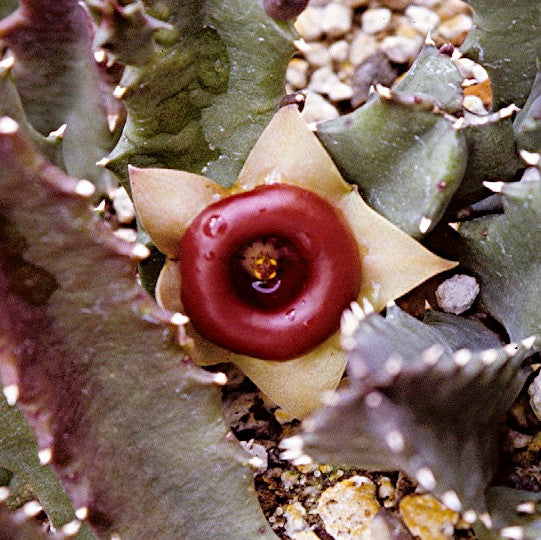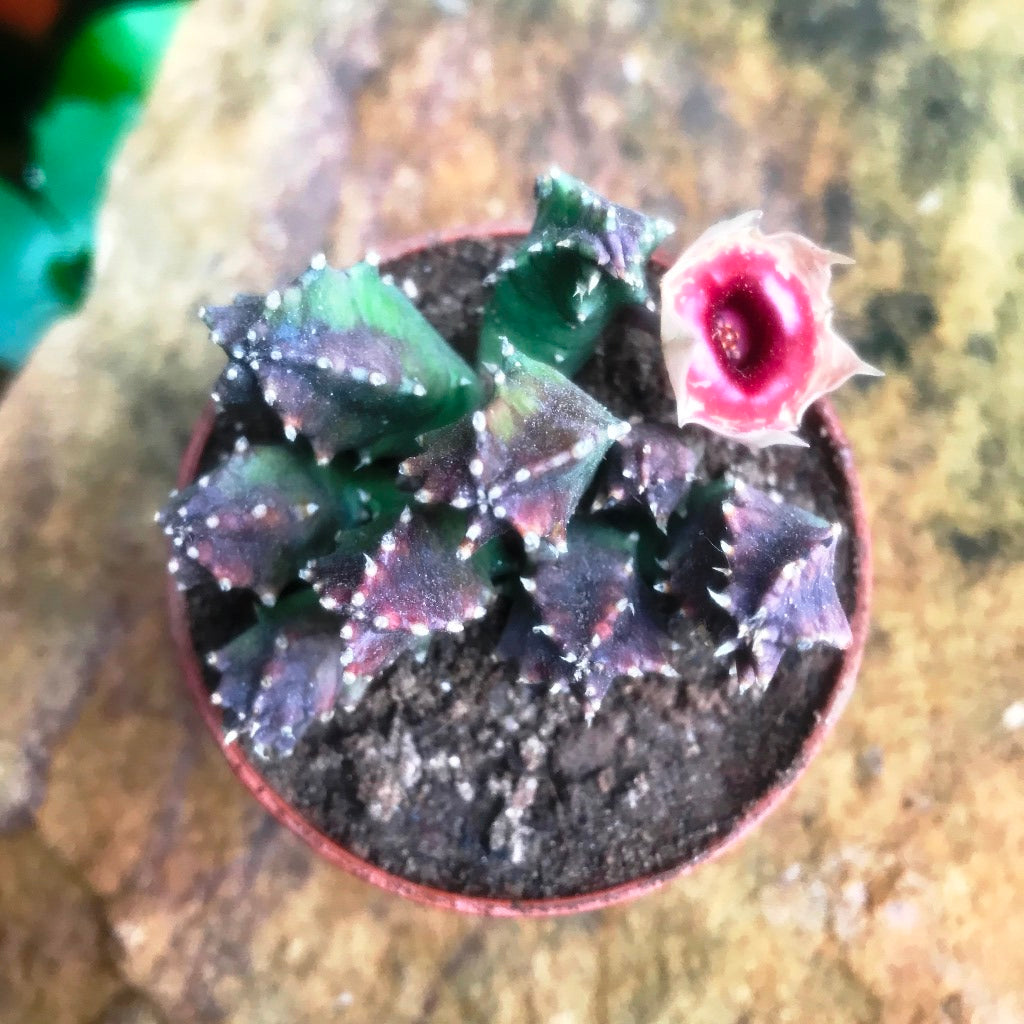Huernias prefer bright light or partial shade. In nature, they grow underneath shrubs or other plants. Too much sun causes stems to develop protective reddish or purple pigmentation and can actually scald the stems. Too little light leads to weak, thin growth with decreased flower production.These plants grow best between 10 and 27 C. Protect them from freezing weather..
Huernias require a potting mix with excellent drainage. A succulent plant mix of 50 percent perlite, 25 percent vermicompost and 25 percent sand helps prevent rotting and over watering. Roots experience die back in cool-season dormancy, so plants grow best in shallow containers that allow the soil to dry out quickly. Using clay pots further helps soil from staying too wet. An under layment of coarse gravel below the soil mix also improves drainage. In climates with damp cool summers, a layer of gravel between the plant and the soil mix also helps prevent the stems from staying too moist. Outdoor plantings do well in raised beds.
Huernia zebrina subs. insigniflora
Family
Asclepiadaceae
Origin
Limpopo, South Africa.
Description
Huernia Insigniflora is a low-growing perennial succulent species more or less creeping, occasionally forming mats. It has maroon-green, 4-angled stems tinged with pink, with acute, spreading teeth. Stems are decumbent-erect, laxly branched, tapering, prominently 5-(to 6) angled, and irregularly branching, 5 cm long, 12 mm in diameter and strongly toothed. Teeth 4,5 mm long
The wide-opening, star-shaped flowers have a distinct, crimson to dark purple raised ring or annulus at the centre, which looks exactly like a life-belt, and ivory to pink spreading lobes. The corolla lobes are pale rose- pink , triangular, shortly pointed,unmarked or, sometimes, faintly mottled or barred and shortly pubescent. It forms small dense clumps up to 10 cm in diameter.
Environment
Huernias prefer bright light or partial shade. In nature, they grow underneath shrubs or other plants. Too much sun causes stems to develop protective reddish or purple pigmentation and can actually scald the stems. Too little light leads to weak, thin growth with decreased flower production.These plants grow best between 10 and 27 C. Protect them from freezing weather..
Huernias require a potting mix with excellent drainage. A succulent plant mix of 50 percent perlite, 25 percent vermicompost and 25 percent sand helps prevent rotting and over watering. Roots experience die back in cool-season dormancy, so plants grow best in shallow containers that allow the soil to dry out quickly. Using clay pots further helps soil from staying too wet. An underlayment of coarse gravel below the soil mix also improves drainage. In climates with damp cool summers, a layer of gravel between the plant and the soil mix also helps prevent the stems from staying too moist. Outdoor plantings do well in raised beds.
Landscape Use
Suitable for Container, Rock Garden & Xeriscaping


























